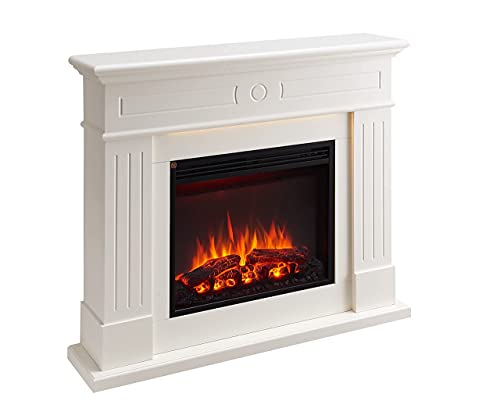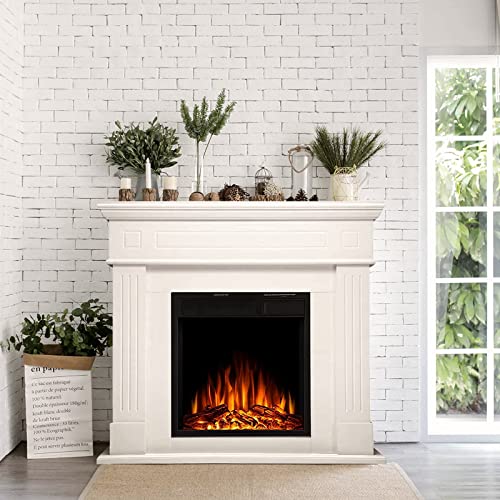Undisputed Proof You Need Wood Burner Fireplace
 How to Get the Most From a Wood Burner Fireplace
How to Get the Most From a Wood Burner FireplaceContrary to traditional open fireplaces shop, wood stoves are designed and optimised to burn firewood. This allows them to meet stricter emission regulations.
Wood burning stoves emit glowing yellow flames that dance and warm crackling noises. They also give you a primal feeling of warmth. However the smoke they release contains carbon monoxide and toxic air pollutants, such as formaldehyde, benzene and polycyclic aromatic hydrocarbons.
Efficient
Wood burning stoves and fireplaces offer a stunning and natural heat source to the home, they are also incredibly efficient. A high-quality wood burner can have an Ecodesign rating up to 77 percent. With the increasing cost of energy, it is essential to ensure that you are getting the maximum benefits from your log burner The good news is that this is more simple than ever before!
One of the most important factors in the efficiency of a wood burning stove is will be the water content of the wood. This is why we suggest only using wood that is seasoned, which has been dried for a minimum of one year, and more often two years. The more dry the wood is, the better it burns. This results in lesser smoke and fewer harmful emissions.
Another great benefit of a wood-burning stove is that it's a low carbon source of fuel, which is great for the environment. Furthermore, by buying locally-sourced firewood, you're helping to promote the active management of woodlands which is a good thing for wildlife.
The only thing a wood-burning stove requires in terms maintenance is to remove and get rid of ash. This can be a bit of a hassle but it's worth it in order to ensure you get the most heat from each log. If you allow the ashes 2-3 days to cool completely They can also be used as a non-toxic and environmentally friendly melting ice. They can also be used to polish jewellery and absorb odors.
A fireplace made of wood is a timeless classic. Although they're not as popular than gas fires but there's no denying the charm and enthralling sound of a roaring fire. These fires are perfect to snuggle up with on cold nights, and create a warm and welcoming area in your home. Making the investment in a top-quality wood stove will pay off for a long time. Contact us today to find out more about how our expert chimney sweeps can help you get the most out of your stove.
Low Carbon
Wood burners that are efficient and clean are among the most efficient ways to save money on logs while keeping your home warm. Additionally, they can also assist in the local woodland management. It's a fantastic way to support the wildlife in your local area.
Wood-burning stoves and fireplaces produce minimal pollution when they are maintained properly and are used with dry, seasoned and dry firewood. When they are not maintained properly or use wood that is of poor quality, the smoke that is produced is a result of fine particles, commonly referred to as particulate pollution that can cause irritation to the lungs and other organs of the body. Carbon monoxide, toxic air pollutants such as formaldehyde and benzene and polycyclic aromatic hydrocarbons are also present. Inhaling air pollution can cause lung irritation and trigger asthma attacks wheezing, coughing, and irritation of the lungs. It can also lead to cancer, heart disease or premature death.
Some people are concerned that wood-burning stoves can contribute to climate changes, but this isn't necessarily true. Burning wood is a carbon neutral energy source. The wood absorbs carbon dioxide throughout its lifespan. When it is burned carbon dioxide is released into the air.
The wood is produced locally, which reduces the amount pollution that is produced during the transport process. It is crucial to choose hardwoods that are seasoned and of high quality. They burn longer and more evenly than softwoods.
Modern, EPA certified wood stoves and heaters (such as those made by Charlton & Jenrick) have significantly lower emissions than older stoves. They have been tested and certified to meet the 2020 EPA standards which are much more stringent than the previous emission limits.
To avoid the buildup of exhaust within your home, all wood burning stoves should be vented fully to the outside. By keeping the flames away from the logs, and ensuring you make use of dry, seasoned wood, all our current clean burn and DEFRA exempt stoves produce extremely clear exhaust and have particulate levels 60 or more lower than the DEFRA limit.
A wood-burning stove equipped with a hybrid unit or catalytic converter could be the best low carbon heating option. These units re-ignite the particulates and gases from the initial combustion at a later stage by mixing them with superheated air. The remaining gasses and particulates are pumped through a catalytic combustion unit for a final and third combustion. This further reduces emissions to levels far below the standards set by the government.
Clean Burn
Cleanburn wood stoves burn fuel at the highest possible efficiency. This results in the emission of minimal particles into the air when burning wood. The air management system of the stove controls the intake and exhaust of gases to ensure the combustion process takes place in a controlled and sealed environment. It also regulates the height of the flame to maximise heat output and minimise emissions.
This means your chimney and its surroundings will be much cleaner than older stoves. Particulate matter, also known as particle pollution, from incompletely burned wood can trigger respiratory issues, such as coughing and wheezing. It can also contribute to heart diseases and stroke, diabetes and other serious conditions. Wood burning also contributes to poor air quality in cities.
Smoke from poorly combusted timber is a source of fine particulate pollutants as well as dangerous air pollutants like carbon monoxide and other hazardous air pollutants like nitrogen oxides and volatile organic compounds (VOCs) as well as benzene and formaldehyde. These particles can be absorbed into the lungs and other organs, causing discomfort and harm, and even death. Airborne dust can also harm the surfaces of your home and create the impression of a rough surface to rooms.
When using your wood-burning fireplace it is important to make use of high-quality firewood that has been seasoned and dried. The most valuable woods for heating are hardwoods like beech, ash, and oak. Hardwoods are dense and have a higher BTU than softwoods. They also provide more heat.
It is also important to determine if your local authority has rules regarding wood burning. These may include rules on odors and nuisances and visible smoke emissions or smoke opacity limitations.
If you have a wood stove with glass doors, it's important to keep the glass clear of grime and deposits. You can use a dry cloth or oven cleaner spray to do this. Alternately, you can add bicarbonate of soda mixed with a small amount of water to the glass.
Regular maintenance of your chimney and stove is also vital. Regular chimney cleanings are necessary to remove creosote, and to ensure that the flue works correctly. Also, make sure you mark dates for periodic inspections in your calendar, since this will allow you to avoid costly repairs and extend the longevity of your wood burner.
Low Maintenance
Many people prefer installing wood burning fireplaces because of the natural warmth they generate. This type of Fireplace online store requires a bit of maintenance and upkeep. The chimney, flue and stove are all possible sources of house fires, if they're not cleaned and maintained regularly. These fireplaces also provide heat in the event of a power outage, particularly during winter storms, when tree branches can fall and power lines could be knocked down.
When you use a wood stove to heat your home, you will reduce your carbon footprint as compared to other fossil fuel sources like gas. Modern wood stoves and inserts are made to conform to EPA (Environmental Protection Agency) standards, which means that they emit very little carbon dioxide. The more well-seasoned wood that you use the more efficient the stove will be. You'll require less wood to achieve the same heat.
These fireplaces require some maintenance and care, including ensuring they are placed away from burning materials and a screening is in place. The flow of air will be improved by keeping the grate free of ash and debris. This will help keep the fire burning longer and your home clean. You should have your stove and chimney swept every year at least two times to prevent the build-up of creosote which could be a fire hazard and a blockage that can hinder circulation.
It may take some time for a new homeowner to master the art of to ignite, light and maintain a continuous fire in the fireplace. Once you've learned the art, your wood burning stove will be an excellent source of warmth and comfort in your home.
Wood burning fireplaces have been in use in some form or another for more than 500 years. They've gained popularity because of their energy efficiency, sustainability and the natural warmth of real wood. Talk with your local Regency dealer about the benefits of wood stoves or inserts for your home if you're planning to buy an entirely new heater.

0 комментариев